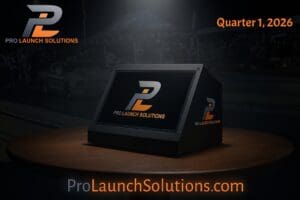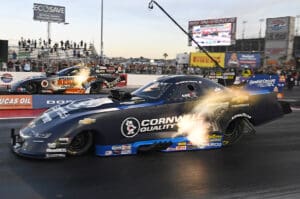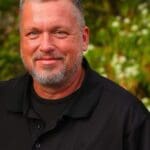 Lee Beard wanted to take his tuning career to the next level. Gary Ormsby provided the opportunity.
Lee Beard wanted to take his tuning career to the next level. Gary Ormsby provided the opportunity.
Ormsby wanted to take his driving career to the next level. Lee Beard provided that opportunity.
The magic season came in 1989 when Ormsby and Beard won their first
world championship and nearly won a second in 1990. One year later,
Ormsby succumbed to cancer.
Over the years, Beard has tuned ten different drivers to 53 NHRA
national event victories in both Top Fuel and Funny Car. He’s also
guided 8 different drivers to 60 No. 1 qualifying efforts. Those
accolades represent a fulfilling career for the veteran tuner.
Two magical seasons crafted him into the championship tuner he is today …

Lee Beard wanted to take his tuning career to the next level. Gary Ormsby provided the opportunity.

I was fairly young at the time, and I had won national events, but
never a championship. I don’t think people really give
you that due respect until you have that championship ring.
Ormsby wanted to take his driving career to the next level. Lee Beard provided that opportunity.
The magic season came in 1989 when Ormsby and Beard won their first world championship and nearly won a second in 1990. One year later, Ormsby succumbed to cancer.
Over the years, Beard has tuned ten different drivers to 53 NHRA national event victories in both Top Fuel and Funny Car. He’s also guided 8 different drivers to 60 No. 1 qualifying efforts. Those accolades represent a fulfilling career for the veteran tuner.
However full, those memories pale in comparison when Beard talks about the magical 1989 season that he shared with Ormsby. 1989 was a year sprinkled with the positives of six national event victories, both ends of the Top Fuel world record and a world championship.
“That was a great time in my career,” Beard recollected. “At the time I wasn’t a real big name crew chief. I had a lot to prove and Gary wasn’t a big name driver then. He hadn’t won a national event when I came to work with him. The opportunity was perfect for us to assemble a championship team. I think that season put us both, career-wise, one the map.”
Ormsby provided the opportunity for Beard’s name to be spoken alongside the likes of Tim Richards [Joe Amato], Fuzzy Carter [Eddie Hill], Dick LaHaie and Ken Veney [Darrell Gwynn]. On the same token, Beard provided the opportunity for Ormsby to showcase his superior driving talents.
“I was fairly young at the time, and I had won national events, but never a championship,” Beard said. “I don’t think people really give you that due respect until you have that championship ring.”
It was a challenging year. We certainly had a car
that had an advantage over the rest of the cars in terms of its
performance. We had more than our share of obstacles to overcome.
a d v e r t i s e m e n t
Click to visit our sponsor’s website
Together, Ormsby and Beard earned the title; it certainly wasn’t given to them.
“It was a challenging year,” Beard admitted. “We certainly had a car that had an advantage over the rest of the cars in terms of its performance. We had more than our share of obstacles to overcome.”
Rarely can a team afford to crash two cars in a season, race a show car for two races and win the championship.
Ormsby was riding a high of four race championships as the schedule headed into the 1989 NHRA event in Sonoma, Ca. He held a commanding lead in the point standings. Then on a fateful qualifying run, a wing tree broke causing Ormsby to crash the car.
Fortunately, Larry Minor had a similar car and sold it to them, despite Minor’s driver Dick Lahaie being in a championship battle with Ormsby.
The replacement dragster was an adequate quick-fix and worked well until a second crash in Brainerd when Ormsby red-lighted, got out of the throttle and back into it. The car climbed into a wheel stand and came down into the guard wall ruining it.
“In a three-week period, we had ruined two race cars,” Beard said. “That kind of put us down, but we had a young and real aggressive team. I had Mike Green, Chuck Schifsky and Don Lovelace. They wanted to pull the show car out of Ormsby’s dealership and race it.”
The dragster on display in Ormsby’s Auburn, Ca., dealership rolled out of the show room and into the trailer to race Indianapolis two weeks later. A testimony to the resolve of the team, Ormsby had a good showing in Indy and drove his way to a world speed record two weeks later. This was a three year old car that had been retired and previously carried the streamliner body.
In the meantime, Al Swindahl built a new car that set both ends of the world record in its second outing. Ormsby also won his fifth race of the season in Dallas.
This new car, Beard adds, was well ahead of its time.
a d v e r t i s e m e n t
Click to visit our sponsor’s website

In a span of three weeks during the 1989 season, the team crashed three cars yet drove a three-year old showcar to a world record and broke in a third new car with both ends of the world record and twol national event victories.
“That car was pretty much the same as the cars you see out here today,” Beard said. “That was the last major change you saw on the chassis and that period in time was really an exciting time for me as a crew chief.
“Your hands weren’t tied with so many rules,” he continued. “We could run whatever gear ratio we wanted. There were several different tires available. We had electronics in both the fuel and engine management systems. The rules were more wide open.”
Beyond that, Beard added that teams could run whatever cylinder head they preferred with any compression ratio. The superchargers weren’t that limited either.
“The rules were wide open,” Beard said. “It was fun because we developed a combination that had an advantage. We could go in and win the race provided we didn’t beat ourselves. It was a great time in my career.”
Beyond the cars and performance advantages, Beard is quick to point out that he was teamed with an extraordinary driver. Ormsby carried an average reaction time in the 1989 championship season which would be .020 by today’s current system.
That’s beyond being a good driver.
“He was one of the best, if not the best,” Beard said. “Every driver that I’ve had has been the cream of the crop. When Gary was on, he was tough to beat.”
Beard’s current driver Antron Brown reminds him a lot of Ormsby.
“I see so many similarities in them; in their driving styles,” Beard said. “Antron is very smooth in his driving style and very easy on the race car. The clutch temperature is always consistently low and that was always something Gary took pride is. He was a smooth driver who took it easy on the equipment.
“Gary could drive the car right down the groove. If you watch the overhead ESPN2 shots, you see drivers wander in and out of the groove. Gary always looked like he was driving on a string.”
a d v e r t i s e m e n t
Click to visit our sponsor’s website

Ormsby and Beard led the 1989 championship battle from start to finish. They came within one round victory of claiming the 1990 crown as well.
Ormsby and Beard were no flash-in-the-pan. In their championship-defense season, they stormed back with another six victories and nearly pulled off a second title, losing the deciding race in the finals of the 1990 NHRA Finals in Pomona, Ca.
It was their last final round together.
Ormsby was diagnosed with stomach cancer shortly after and started the 1991 season but never finished. The illness overtook him until he could no longer drive. He was forced out of the car by the time the circuit hit the NHRA Summernationals in Englishtown, N.J.
Beard continued to operate the team in Ormsby’s absence. Gordie Bonin was the replacement driver taking over after Don Garlits reluctantly declined the offer to drive citing a conflict of interest with longtime sponsor Kendall Oil.
The team was sold in the declining days of Ormsby’s life to then Castrol GTX teammate Pat Austin.
Beard knew early in the diagnosis that Ormsby was fighting cancer and admitted he found hard to keep his emotions in check.
“I was in the loop and we kept it from the team as long as we could,” Beard said. “We kept thinking he was going to beat it and make a comeback. It was hard to swallow when we realized that he wasn’t going to recover. We ended up having to sell the team and that was a very tough time in my life.”
Ormsby lost his battle with cancer on August 28 the day before the 1991 NHRA U.S. Nationals began.
Shortly after his passing, Beard told Super Stock & Drag Illustrated something that summed up the way he viewed Ormsby. His quotes were embedded within a news item discussing the controversial sale of the team to Walt Austin. His comments were directed to the media who had begun to take the focus off of the reason for the sale and put it on the details.
“I hope they can remember that we are losing one of the best guys to ever enter our sport,” Beard said in the November 1991 issue of SS&DI. “Gary is a guy who never thought of himself as a superstar and never has liked press conferences. I hope they say that.”
Didn’t need to, he said it for us.






































